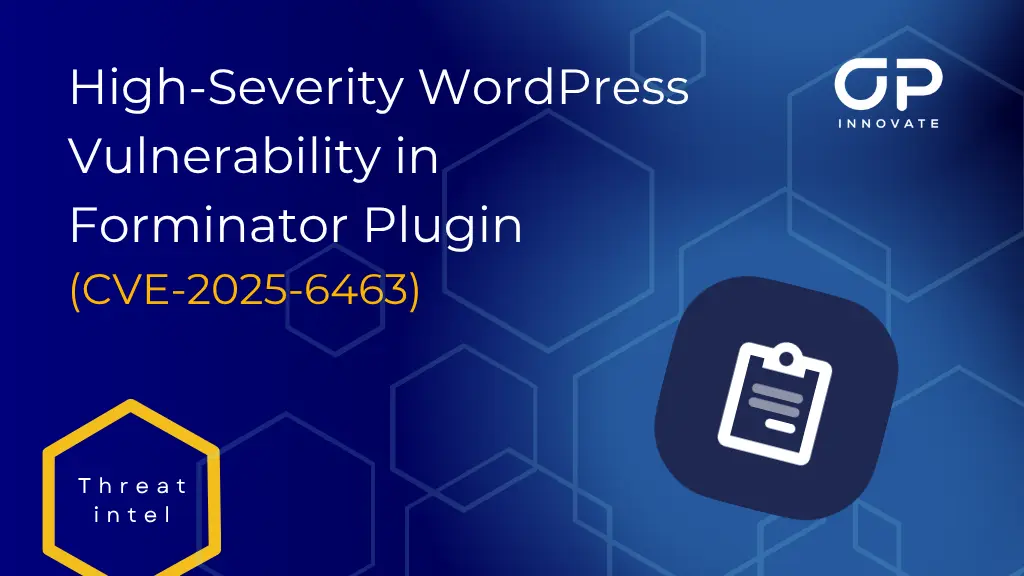Looking to protect your web application from potential hackers? Look no further than OP Innovate’s web application penetration testing services.
With our expertise, we’ll identify vulnerabilities and assess the security of your application, ensuring that your data remains safe.
Don’t leave your website exposed to threats – trust our team of experts to provide you with the best pen testing service available.
Introduction to Penetration Testing
Let’s start by understanding what penetration testing is.
Pen testing is a proactive security testing approach to identifying and addressing vulnerabilities in a web application.
It involves simulating real-world attacks to assess the security of the application and find potential weaknesses that could be exploited by malicious actors.
It also provides a comprehensive evaluation of your web application’s security and involves simulating real-world attacks to identify vulnerabilities and exploit them, helping you understand your system’s weaknesses and improve its overall security posture.
Here are five key aspects of penetration testing:
- Vulnerability assessment: Identifying potential weaknesses in your web app infrastructure, code, or configurations.
- Exploitation: Attempting to exploit identified vulnerabilities to gain unauthorized access or control over the application.
- Security assessment: Evaluating the effectiveness of your security controls and measures in protecting against attacks.
- Risk management: Assessing the potential impact and likelihood of a successful attack and prioritizing remediation efforts.
- Security audit: Conducting an independent review of your application’s security controls and practices.
Through ethical hacking, penetration testing helps you proactively identify and address security risks, ensuring your web application remains secure against evolving threats.
Web Application Penetration Testing Methodologies
Web application security testing is a more specific type of pen testing
- It ensures that secure coding practices are implemented and followed during the development process.
- It aligns with industry standards such as OWASP (Open Web Application Security Project) to effectively address potential threats.
- It helps organizations establish and enforce security policies throughout the secure software development lifecycle.
Common Web Application Vulnerabilities
Here are some of the most common web application vulnerabilities and how they can be identified and addressed through web application penetration testing. These vulnerabilities can leave your web application exposed to potential attacks, compromising the security of your data and the integrity of your system. Below is a table outlining some of the most common web application vulnerabilities and their potential impact:
| Vulnerability | Description | Impact |
|---|---|---|
| Cross-Site Scripting (XSS) | Allows attackers to inject malicious scripts into web pages viewed by users, leading to unauthorized access to sensitive information or control over user sessions. | Theft of sensitive user data, session hijacking, defacement of web pages |
| SQL Injection | Enables attackers to manipulate SQL queries and gain unauthorized access to databases, potentially exposing sensitive information or even allowing the attacker to take control of the entire system. | Unauthorized access to databases, theft of sensitive information, potential compromise of the entire system |
| Remote File Inclusion (RFI) | Allows attackers to include malicious files from remote servers, which can lead to remote code execution, unauthorized access to files, or even server compromise. | Remote code execution, unauthorized access to files, potential compromise of the server |
| Local File Inclusion (LFI) | Enables attackers to include local files on the server, which can lead to unauthorized access to sensitive files, information disclosure, or even server compromise. | Unauthorized access to sensitive files, information disclosure, potential compromise of the server |
| Command Injection | Allows attackers to execute arbitrary commands on the server, potentially gaining unauthorized access, executing malicious actions, or even taking control of the entire system. | Unauthorized access, execution of malicious actions, potential compromise of the entire system |
| Cross-Site Request Forgery | Enables attackers to trick authenticated users into performing actions on a website without their consent, potentially leading to unauthorized changes or actions. | Unauthorized changes or actions performed by authenticated users |
| Session Hijacking | Allows attackers to steal or manipulate user session information, potentially gaining unauthorized access to user accounts or sensitive data. | Unauthorized access to user accounts, theft of sensitive data |
| Authentication Bypass | Allows attackers to bypass authentication mechanisms, gaining unauthorized access to protected resources or user accounts. | Unauthorized access to protected resources, user account compromise |
Methodology for Web Application Penetration Testing
To effectively conduct web application penetration testing, you need to follow a structured methodology that includes various stages and techniques. Here are five important aspects of a web application penetration testing methodology:
- Enumeration: This involves gathering information about the target application, such as its architecture, technologies used, and potential vulnerabilities.
- Vulnerability scanning: This step involves using automated tools to scan the application for known web vulnerabilities and network vulnerabilities.
- Exploitation: Once vulnerabilities are identified, the tester attempts to exploit them to gain unauthorized access or perform other malicious activities.
- Reporting: After the testing is complete, a detailed report is generated, highlighting the vulnerabilities found, their potential impact, and recommendations for remediation.
- Remediation: This involves working with the development and IT teams to address the identified vulnerabilities through security patches, system hardening, and security compliance measures.
Choosing the Right Penetration Testing Tools and Services
When choosing the right penetration testing service, there are several factors you should consider.
Ensure that the team is experienced in offensive security and knows how to “think like a hacked”. While Certifications and credentials can demonstrate the service provider’s expertise and credibility in the field, it shouldn’t be your sole indicator.
Factors to Consider in Selecting a Penetration Testing Service
Consider the expertise and experience of the provider when choosing a penetration testing service.
Here are some factors to consider in selecting the right penetration testing service:
- Knowledge of network infrastructure: The provider should have a deep understanding of network architecture and protocols to identify vulnerabilities.
- Cybersecurity expertise: Look for a provider with a strong background in cybersecurity to ensure comprehensive testing and analysis.
- Experience with firewalls: A provider who’s familiar with different firewall technologies can effectively test their effectiveness.
- Proficiency in intrusion detection and prevention systems (IDS/IPS): The provider should be skilled in identifying and mitigating potential threats using IDS/IPS.
- Ability to simulate phishing attacks: An experienced provider can simulate real-world phishing attacks to assess an organization’s vulnerability to social engineering attacks.
When selecting a penetration testing service, it’s crucial to consider these factors to ensure a thorough evaluation of your network security.
Additionally, providers with expertise in threat modeling and secure software development lifecycle (SDLC) can offer valuable insights into improving the overall security posture of your organization.
Certifications for Penetration Testing Services
Ensure that you look for certifications from reputable organizations that specialize in penetration testing services to guide you in choosing the right provider. These certifications provide assurance that the service provider has the necessary skills and knowledge to perform effective penetration testing. Here are some certifications to consider:
| Certification | Description |
|---|---|
| Certified Ethical Hacker (CEH) | Focuses on identifying vulnerabilities and weaknesses in target systems, using techniques such as brute force attacks and social engineering. |
| Offensive Security Certified Professional (OSCP) | Emphasizes hands-on practical skills and requires the completion of a challenging 24-hour exam. |
| Certified Information Systems Security Professional (CISSP) | Covers a wide range of security topics, including encryption algorithms, data breaches, and distributed denial of service (DDoS) attacks. |
| GIAC Certified Penetration Tester (GPEN) | Assesses the knowledge and skills required to conduct penetration testing engagements. |
| Offensive Security Certified Expert (OSCE) | Advanced certification that focuses on advanced exploitation techniques and real-world scenarios. |
Benefits of Hiring a Professional Penetration Testing Service
By hiring a professional penetration testing service, you can gain valuable insights into the security vulnerabilities of your web application and ensure its protection.
Here are some benefits of hiring a professional penetration testing service:
- Thorough analysis of application architecture: A professional service will thoroughly analyze your web application’s architecture to identify any weaknesses that may exist.
- Testing of mobile applications: If your web application has a mobile component, a professional service can test it for vulnerabilities specific to mobile platforms.
- Evaluation of encryption: A penetration testing service can evaluate the effectiveness of your encryption methods and recommend improvements if necessary.
- Adherence to OWASP standards: Professionals are well-versed in the OWASP Open Web Application Security Project, ensuring that your application meets industry standards for security.
- Identification of zero-day vulnerabilities: A professional service can uncover and help you mitigate zero-day vulnerabilities that may not be known to the general public yet.
OP Innovate Web Application PenTesting
You should trust OP Innovate for your web application penetration testing needs. OP Innovate is a leading provider of comprehensive web application security solutions. With their expertise and experience in the field, they can help you identify vulnerabilities and protect your web applications from potential threats.
Here is a table that illustrates the key features of OP Innovate’s web application penetration testing services:
| Features | Description |
|---|---|
| Expert Team | Highly skilled and certified professionals |
| Methodology | Robust and proven testing methodologies |
| Reporting | Detailed reports with actionable recommendations |
| Dos Testing | Thorough testing to identify and prevent DOS attacks |
| Hashing | Ensuring secure storage and transmission of passwords |
OP Innovate understands the importance of web application security and offers tailored solutions to address your specific needs. By choosing OP Innovate, you can ensure the security and reliability of your web applications, protecting your business and customers from potential cyber threats.









